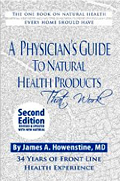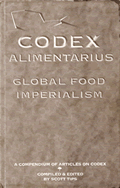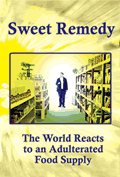ARTERIOSCLEROSIS
CAN BE REVERSED
PART
1 of 2
By Dr. James
Howenstine, MD.
July 24, 2008
NewsWithViews.com
Vitamin K2 Removes Calcium From Arteries And Deposits It In Bone
Detecting calcium deposits in arteries by computer tomography scanning studies has become a valuable clue that an individual has arteriosclerotic heart disease and has significant risk for heart attack and sudden death. Detected calcium arterial deposits thus permit life style changes to be instituted before sudden death or acute myocardial infarction has occurred. This increased risk of calcium deposition into arteries has recently been confirmed to bring increased risk of heart attack and heart disease deaths to blacks, Hispanics and Chinese[1] even though their risks are less than Caucasians.
Western cultures (Northern Europe, Canada, USA,) eat a high protein, high dairy, high phosphorus acidifying diet. This type food causes large amounts of calcium to be wasted in the urine as it is removed from bone tissue to try to preserve an alkaline cellular environment in the face of a very acidic dietary protein intake. To make matters even worse the ratio of calcium to magnesium in milk is 9 to 1 which exaggerates the lack of magnesium found in food grown on magnesium depleted U.S. soil. Low magnesium stores in bone cells prevents magnesium from being of any value in attempts to preserve an alkaline body pH. Naturally the Western diet leads to profound loss of calcium and magnesium from bone thus ensuring osteoporosis and fractured bones in the elderly. The nation of Thailand which eats almost no dairy products and obtains calcium primarily from vegetables has much less osteoporosis than western nations on their high protein high dairy product diets.
Calcification in cellular tissues is a sign of tissue damage, cellular aging and impending cell death. When cells are unable to regulate calcium and keep the calcium content of cells down cellular function degenerates. Calcified arteries, calcium in soft tissues and high levels of calcium within cells are all signs of aging. At age 80 the average calcium content in the aorta is 140 times greater[2] than the levels of aortic calcification noted at age 40. This may relate to a long period of unrecognized Vitamin K2 deficiency.
Vitamin K1 is found in plants and Vitamin K2 is found in animals and bacteria (healthy colon bacteria, Japanese natto, low fat Dutch gouda and edam cheese). Bacteria in the colon are able to produce and store about one month of Vitamin K. Antibiotics kill many of these good intestinal bacteria thus impairing production of Vitamin K. The non-steroidal anti-inflammatory drugs have similar adverse effects on these valuable bacteria. Vitamin K absorption is improved by dietary fat which stimulates bile secretion.
Studies have shown that subclinical Vitamin K deficiency,[3] [4] is present in most healthy adults. The first symptoms of this deficiency can be heart attack or a fractured osteoporotic bone. In the Framingham study subjects in the highest quartile for Vitamin K intake had a significantly lower risk[5] of hip fracture.
In 1984 scientists reported that patients with osteoporotic fractures had circulating Vitamin K1 levels that were 70%[6] lower than age and sex matched controls. These findings were confirmed and it was noted that low levels of Vitamin K were associated with loss of bone mineral density creating an independent risk factor for bone fracture. Further studies have disclosed that Vitamin K1 was less effective than Vitamin K2 in preventing bone loss.
The absorption of synthetic Vitamin K1 has recently been compared to the absorption of Vitamin K2(menaquinone-7) in healthy subjects. Vitamin K1 has been widely used in food supplements. Recently natural Vitamin K2 has become available for use in supplements. Both Vitamin K1 and Vitamin K2 were well absorbed with peak blood levels reached at 4 hours. Unlike Vitamin K1, Vitamin K2 was found to have a very long half life which results in stable higher blood levels. During prolonged intake the long half life permits accumulation Of K2 to levels 7-8 fold higher than that seen after one dose. Vitamin K2(MK-7) is 6 times more potent than Vitamin K1.
Use Of Vitamin K2(Menaquinone-7) To Prevent Calcium Plaques From Appearing In Arteries
The commonly used anticoagulant drug coumadin interferes with the metabolism and function of Vitamin K by inhibiting the enzymes needed to produce Vitamin K This drug can produce excessive bleeding and does produce progressive widespread calcification of arteries and the aorta.
A
clinical study from Rotterdam, Holland revealed a correlation between
long term adequate Vitamin K2 intake and a lower incidence of
calcification of the wall of the aorta. Arteries with no plaques have a
20 to 50 fold increase in Vitamin K2 concentration when compared to
arteries with arterial plaques. The high K2(menaquinone-7) content
arteries were noted to be more flexible[7] and elastic than arteries
lacking K2.
Lack of Vitamin K2 causes calcium to fail to be deposited in bones
where it belongs and to be deposited instead in arteries, aorta, soft
tissues including muscle, breast, kidneys and in heel spurs.
A protein called osteocalcin transports calcium to bone. Vitamin K2(menaquinone-7) is used to solidify this calcium into the bone matrix. When Vitamin K2 is lacking the calcium remains in the blood and ends up getting deposited in the walls of arteries and other sites which is very undesirable. Thus Vitamin K2 becomes a critical nutrient for both bone and arteries. The primary therapy for osteoporosis in Japan has become Vitamin K2(Synergy K).
Dr. Leon Schurgers and Dr. Cees Vermeer of Maastricht University in Holland studied 4800 elderly Dutch men and women to ascertain whether Vitamin K2 could help prevent artery calcium deposits. They learned that persons with the highest dietary intake of K2 (primarily originating in low fat Dutch cheeses Gouda and Edam) had the least evidence of calcification of the aorta[8] when compared to persons with low Vitamin K2 intakes. The higher the intake of these cheeses the lower the mortality from cardiovascular disease.
The fermented soy Japanese food natto contains Vitamin K2 in large amounts but Americans are likely to find it’s taste and smell objectionable unless it is covered by sauces. All of the Vitamin K2 produced in making the enzyme nattokinase has now become available to be sold for use in food supplements.
The
drug coumadin
is widely used by conventional medicine in cardiovascular disease to
prevent clotting. Numerous natural health experts have been concerned
for years that coumadin
was not effective in preventing vascular deaths but also has problems
with occasional serious internal bleeding episodes.
German researchers[9] found out in 2005 that long
term use of coumadin produced increased calcium in the aortic valve and
coronary arteries when compared to patients not taking coumadin.
Dr. Gary Gordon states that “every
patient on coumadin is increasing the calcium content of all vascular
tissues. The calcium[10] content of arteries is now proven to be more
dangerous than diabetes, elevated cholesterol or hypertension, we must
now try to educate patients.”
Patients taking coumadin can be easily moved to safer anticoagulant
therapy.
This
information proves that Vitamin K2 is a critical nutrient for patients
with arteriosclerosis as it has the potential to prevent and remove
calcium from arteriosclerotic plaques thus making plaques easier to
dissolve and less dangerous..
Vitamin K2 is now available as Synergy K. One capsule of Synergy K
contains 45 mcg of Vitamin K2(Menaquinone-7) and 1 mg of (Menaquinone-4
less well absorbed than K2). Natural Health Team 1-800-416-2806 can
supply Synergy K. The dose should be one capsule daily(45 mcg.).
Arteriosclerosis Caused by Elevated Homocysteine, and its Correction
Methionine from red meat, milk, and milk products is converted in the body into homocysteine. When the body’s stores of B6 (pyridoxine), folic acid, and B12 fail to bring this homocysteine down to normal values, there is a three times greater risk of heart attack than in males with normal homocysteine values.
Dr. Kilmer McCully gets credit for discovering the critical role that homocysteine plays in the genesis of arteriosclerosis. Homocysteine stops the production of the valuable vasodilating nitric acid, causes blood to thicken, and facilitates the oxidation of LDL cholesterol, thus setting the stage for an atherosclerotic plaque to form. As more patients are studied, it has become evident that elevated levels of homocysteine are a common cause for arteriosclerosis (at least 40% of patients).
If you have artery problems, measuring homocysteine in the blood will frequently provide clear evidence that homocysteine is causing the problem, not cholesterol. The homocysteine blood test should become part of annual laboratory tests and is particularly important for smokers, diabetics, hypertensives, patients with familial hypercholesterolemia and persons who have had stokes, heart attacks, angina and claudication( arteriosclerosis of aorta and leg arteries).
A Norwegian[11] study discovered that in 587 patients with coronary heart disease, the risk of death within four years was proportional to total plasma homocysteine level. The risk rose from 3.8% with homocysteine below nine micromols per liter to 24.7% in patients with homocysteine levels above 15 micromols per liter.
The only way to be certain that you are getting the proper dosage of folic acid, vitamin B12, vitamin B6, and trimethylglycine to treat homocysteine excess is to have regular blood homocysteine HC tests. Each 3-unit increase in HC causes a 35% increase[12] in the risk of heart attack.
Trimethylglycine (TMG) - also called Glycine Betaine - is the most effective[13] agent to lower homocysteine levels. The usual dose is 500 mg three times daily. If HC levels have not fallen adequately, up to 9000 mg of TMG may be needed daily.
Folic acid (800 mcg with each meal) and 1000 mcg of B12 daily are also vital.
B6 (pyridoxine) reduces HC by a different method than folic acid. The dose of B6 should be 100 to 200 mg daily.
In a patient with previous bypass surgery, angina reappeared along with new areas of blockage of heart arteries. This man was taking 15,000 mcg of folic acid daily. His blood homocysteine (HC) level was very high risk at 18. On six grams daily of trimethylglycine, his HC fell to four in one month.
Trimethylglycine functions in treating elevated HC levels by donating methyl groups, which convert HC to the harmless amino acid methionine. Trimethylglycine (Glycine Betaine) can be purchased in health food stores.
A new organic form of Vitamin B Complex (Supreme B) is producing remarkable improvement in cardiac patients as well as healing a wide variety of neurologic disorders by promoting healing and growth of new nerve dells. Supreme B can be obtained from Lifeone Sales, 1-407-349-2241 sales@Supreme-B.com or from www.mynaturalhealthteam.com Ph 1-800-416-2806.
Vitamin C and Lysine
Research by Dr. Linus Pauling and Dr. Mattias Rath demonstrated that 2 grams of Vitamin C and 2 grams of the amino acid Lysine each taken three times daily was very effective in healing arteriosclerotic arteries.
Traditionally
Low Density Lipoprotein was blamed for causing the atherosclerotic
plaque. However, the actual
culprit is a very sticky substance known as lipoprotein (a).
Lysine was added to Vitamin C therapy because it has a surface like
Teflon which tends to repel the sticky lipoprotein(a). The Lysine and
another aminoacid proline surround particles of lipoprotein (a). This
seals off the lipoprotein (a) so that it can not attach more
lipoprotein (a) preventing the plaque from becoming larger.
Additionally lipoprotein (a) previously deposited in the artery wall
begin to be released into the blood stream. These lipoprotein deposits
are transported to the liver where they are burned up. Thus
the size of the plaque starts to decrease.
This is a natural process which proceeds uneventfully until the plaque
is gone.
Lipoprotein(a) is a 10 times more dangerous risk factor than Low
Density Lipoprotein or cholesterol. Within 6 to 8 weeks of starting
lysine and vitamin C many patients had experienced loss of anginal
pain, disappearance of hypertension and the ability to pass an exercise
treadmill test.
These investigators proposed that arteriosclerosis was actually caused by deficiency of Vitamin C which the body needs to create the structural substances collagen and elastin which are used to form the framework of connective tissue and elastic tissue. Patients lacking Vitamin C use the sticky substance lipoprotein (a) to try to solidify the weak spots in arteries which lack collagen fibers. Lipoprotein (a) sticks to irregular areas on the lining of the arteries and proceeds to collect platelets, calcium, lipoproteins (LDL), lipoprotein (a) and fibrin from the arterial blood flow. Over time scar tissue appears and smooth muscle fibers may appear. This build up of the plaque reduces the speed of blood flow and interferes with proper oxygenation of tissues. Anginal pain, transient ischemic attacks in the brain circulation as tiny and large fragments of plaque break off and get carried to more distal sites in the brain arteries, .and actual death of tissue(gangrene in extremities, stroke, heart attack) from extreme lack of oxygenation can result.
Pathologists have long observed that arterial plaques are commonly seen where the forceful arterial stream strikes an arterial wall. This location is frequently at the site where the coronary arteries branch off the aorta. The steady strong force of the arterial stream causes the weak artery wall lacking Vitamin C to seek the reinforcement of additional lipoprotein (a) making a buildup of large plaques at this site very common. If cholesterol was a dangerous toxic substance the occurrence of arterial plaques would be completely random rather than appearing at sites where the arterial wall is being steadily traumatized. This information creates a strong argument that cholesterol is not a primary cause for vascular disease. Additionally we know that more than 50% of patients having an acute myocardial infraction have perfectly normal cholesterol values.
Dr. Matthias Rath[14] and colleagues did research which revealed that lipoptotein (a) is an LDL particle surrounded by a very adhesive protein. Their study disclosed that the plaque is largely composed of lipoprotein (a) rather than LDL molecules. The size of the plaque paralleled the amount of lipoprotein (a) particles deposited in the arterial plaque.
Lipoprotein (a) blood levels vary greatly from person to person. The levels are determined by heredity and are not lowered by special diets. Lipoprotein (a) values can be lowered by 36% in patients taking 2 to 4 grams of Vitamin B3 (nicotinic acid). Vitamin C alone or combined with nicotinic acid may have a lowering effect on the production of lipoproteins .resulting in lower lipoprotein values. When these therapies are combined with lysine and proline the cardiovascular risk of lipoprotein (a) can be reduced.
Animals that easily produce Vitamin C have low levels of lipoprotein (a). Thus humans, guinea pigs and a few primates that fail to produce Vitamin C are able to inadequately repair arteries by virtue of having access to lipoprotein (a).
|
Subscribe to the NewsWithViews Daily News Alerts! |
Very few Americans are consuming more than a gram of Vitamin C daily. Humans, primates, and guinea pigs lack the L-gulonolactone oxidase GAL enzyme. All other animals are able to manufacture ascorbate from glucose and thus become able to handle stress far better than humans who invariably fail hopelessly in producing the 30 to 100 grams of ascorbate daily that may be necessary to combat a stressful event. For part two click below.
Click here for part -----> 2,
© 2008 Dr. James Howenstine - All Rights Reserved


















